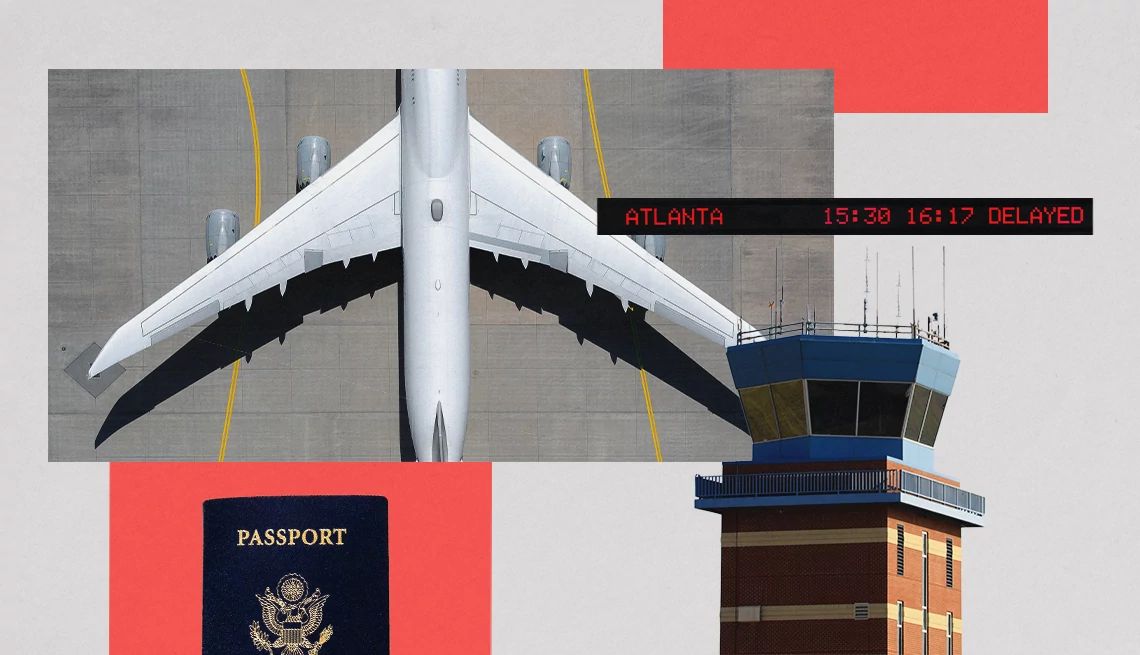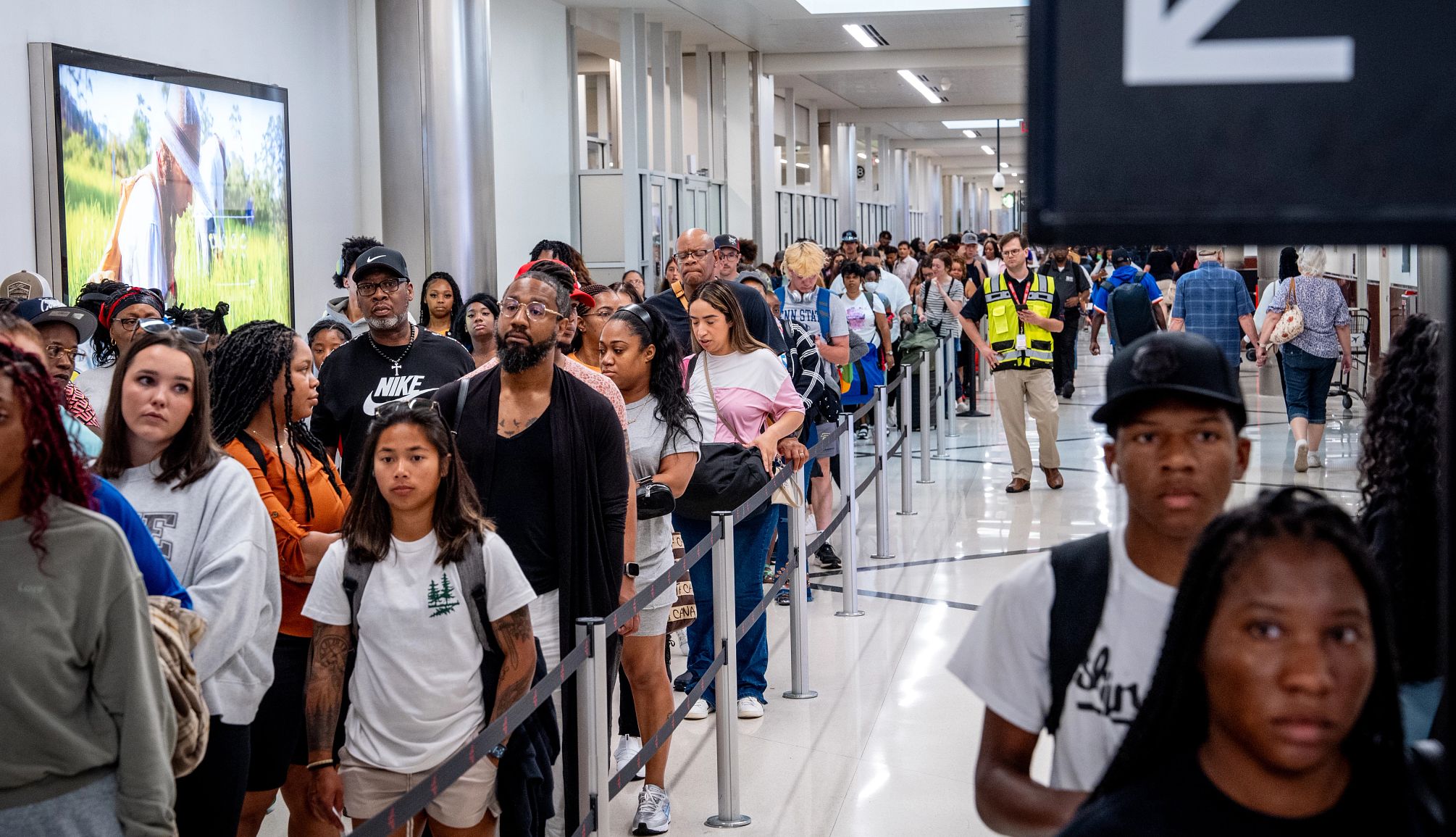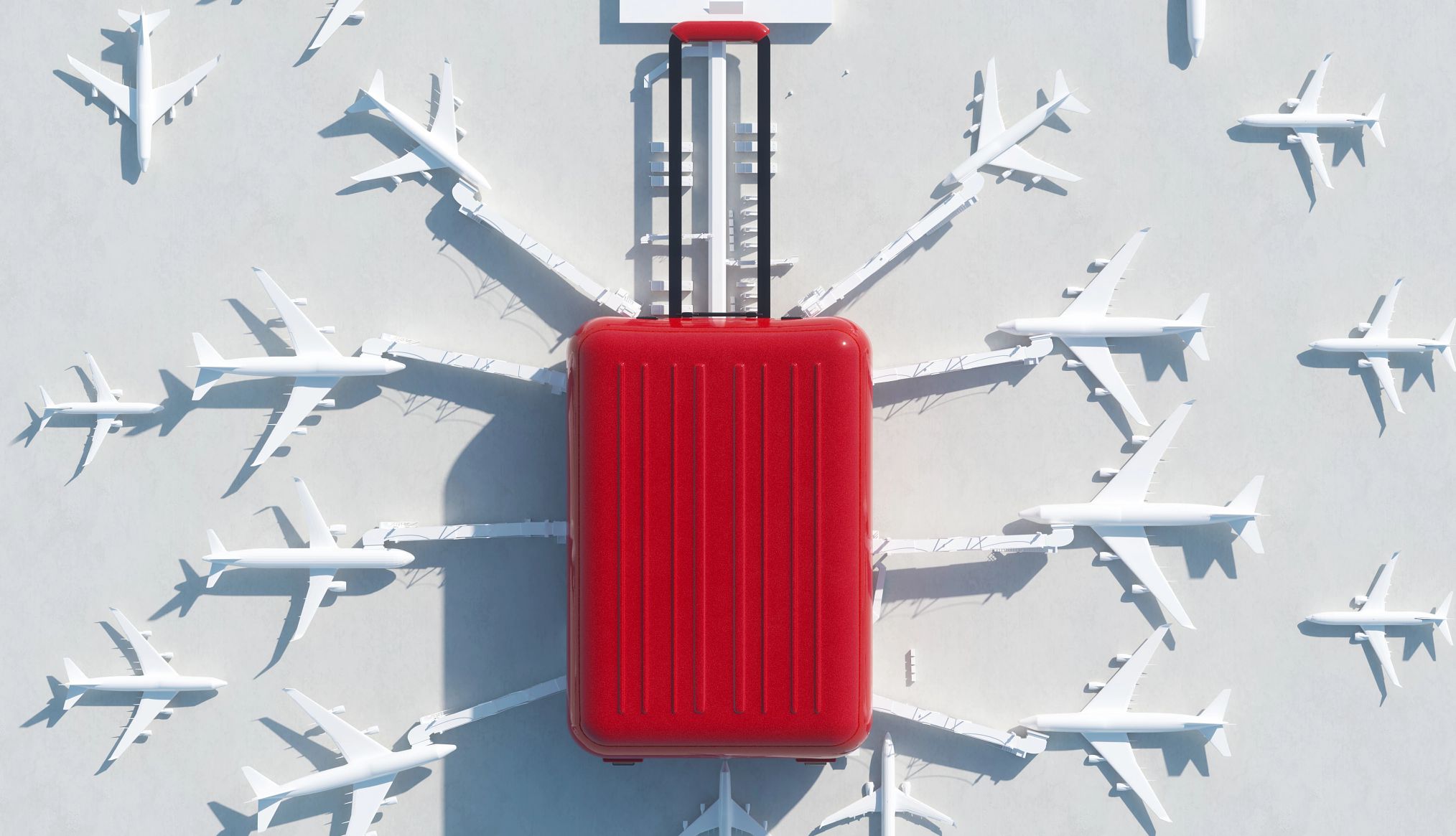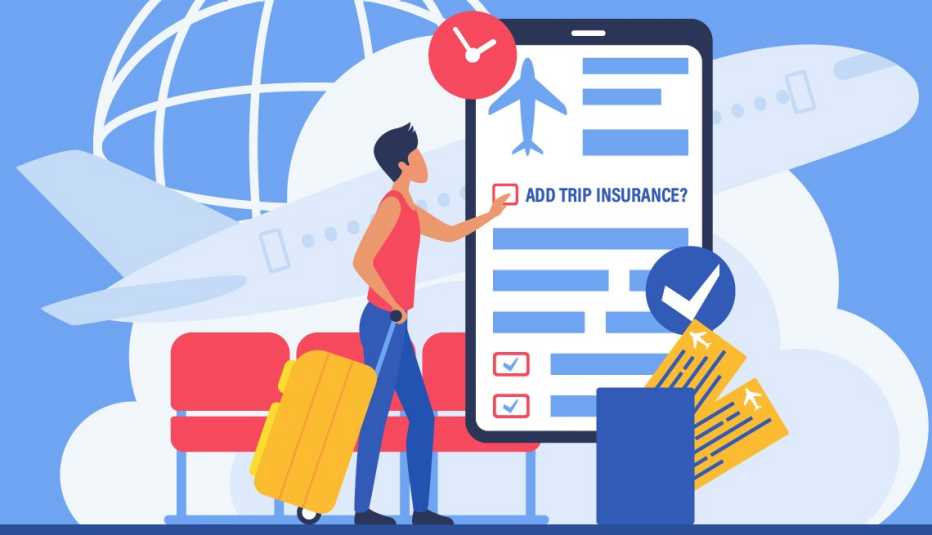AARP Hearing Center
It’s back to regular flight schedules, as far as the Federal Aviation Administration is concerned, as of 6 a.m. ET on Monday, Nov. 17. This is welcome news for travelers heading into the busy holiday travel season, including the 70 percent of adults 50-plus who planned to travel in 2025, according to AARP’s Travel Trends survey. The survey also identified an increase in domestic air travel among this age group.
Nearly 60 flights were canceled Monday, according to the flight tracking website FlightAware. That is in contrast to the high of 2,900 canceled flights on Nov. 9, with severe weather in parts of the country a contributing factor, The Associated Press reported.
The announcement that normal operations would resume came in a joint statement from Transportation Secretary Sean P. Duffy and FAA Administrator Bryan Bedford on Sunday, Nov. 16.
The FAA had issued a flight reduction emergency order mandating flight cuts at 40 high-volume airports due to an ongoing shortage of air traffic controllers, who were working without pay during the shutdown. The reductions began Nov. 7 at 4 percent.
The reductions were scheduled to climb to 10 percent, but they topped out at 6 percent. More air traffic controllers returned to work, so conditions at airports began to improve in the days leading up to the shutdown’s end on Nov. 12. At 43 days, it was the longest shutdown in American history.
Improvements continued before the mandate was lifted. Data from aviation analytics firm Cirium showed that less than 1 percent of all flights were canceled on Nov. 15 and 16, according to AP. The FAA statement said its safety team “recommended the termination of the order following their detailed reviews of safety trends and the steady decline of staffing-trigger events in air traffic control facilities.”
The FAA restricts the number of flights landing and taking off at an airport anytime there is a shortage of controllers, to ensure safety. The organization had very few controllers to begin with, so the government shutdown made the shortage worse. Duffy’s statement declared a focus on controller hiring and upgrading the air traffic control system in general.
More than 5 million passengers were affected by staffing-related delays or cancellations since the government shutdown began Oct. 1, according to Airlines for America, an industry trade group. The group forecasted a record 31 million passengers traveling for Thanksgiving.
What did airlines do during the FAA’s reductions?
During the traffic reduction mandate, United, Southwest, Delta and American stated that they would attempt to minimize the impact on their customers. Airlines urged travelers to check their apps and websites for the latest flight information. The airlines also granted travelers the ability to change or cancel their flights at no cost, often even if their flight was not affected. If you’re looking for specific details on a flight change, cancellation or refund, click these links:





































































